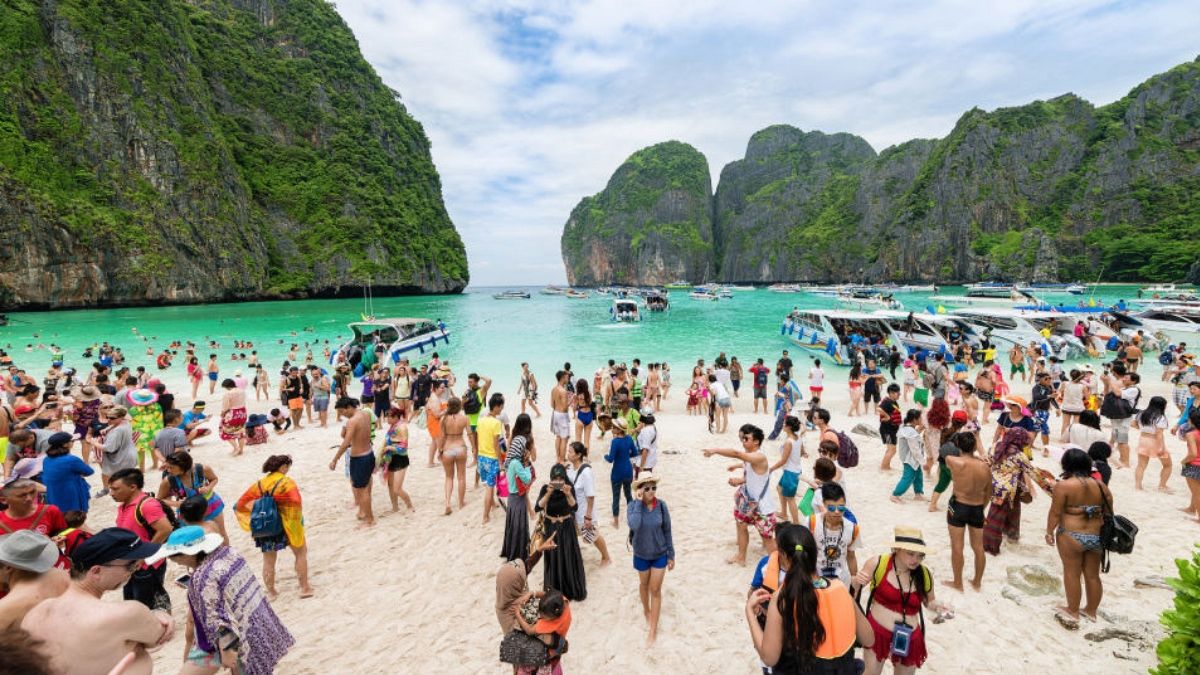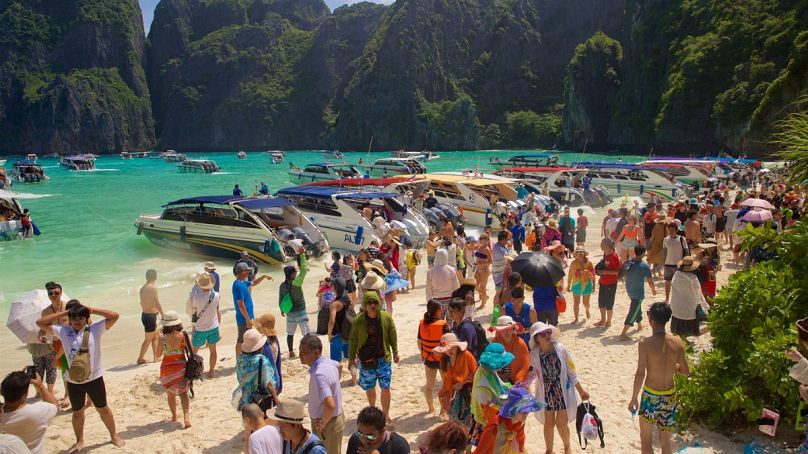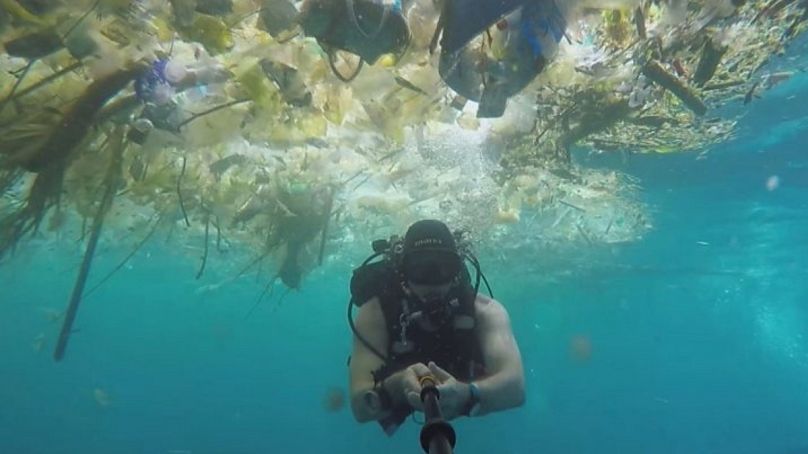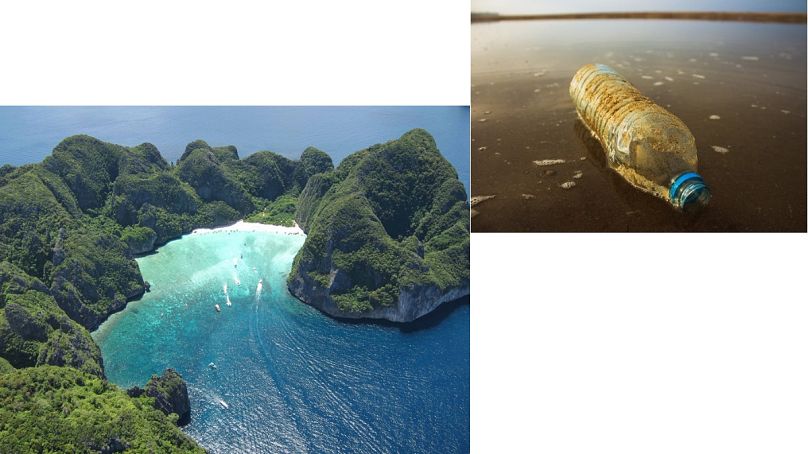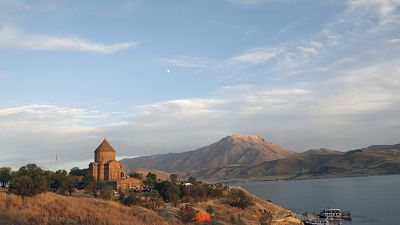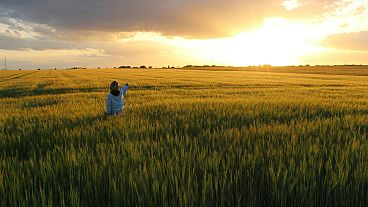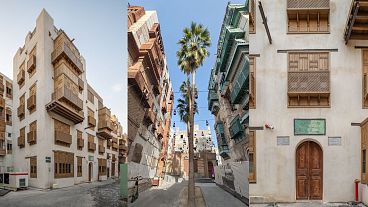For the first time, ecology comes before economy as Maya Bay recover from mass tourism damaged
If you were alive in 2000, there is a good chance that you remember Danny Boyle’s movie The Beach. Maybe not the entire movie (we are not getting any younger), but at least the part where short-haired Leonard Di Caprio, walking through the jungle, finally discovers the secret and mythical place he had been looking for: a heavenly white sandy beach with pristine waters, sheltered from the outside world by majestic arc-shaped limestone cliffs.
You remember, right? Well, you’re not the only one… Inspired by the beauty of this world-famous scene (the movie generated more than 145 million dollars in revenue worldwide), 5 000 tourists now tread this 125 meters long and 15 meters wide beach every day – that is to say more than 1,2 million visitors a year!
Most tourists come from neighboring Kho Phi Phi and Phuket islands aboard speedboats chartered by countless local tour-operators. They stay on Maya Bay on average less than half an hour. Long enough to take a picture and say “I came here” – and so were four hundred other people with me.
But tourist overpopulation causes bigger problems than just a few ruined pictures. Most corals, which used to make the beauty of the site, died after damaged caused by boat engines, trash thrown by visitors and sunscreen diluted in water. This brings us to the following paradox: tourists come to see a gorgeous and pristine lagoon and end up visiting an overcrowded and polluted beach. In 2018, Leonardo would have had to kiss Virginie Ledoyen in a plastic soup filled with PET bottles and cigarette butts. Kind of sad, isn’t it?
The impact of mass tourism on fragile islands ecosystems is all the more alarming as Maya Bay is not an isolated case in Southeast Asia. Last March, a viral video of British diver Rich Horner showed countless plastic bags and other waste in Bali’s tropical waters.
“So much plastic: plastic bags, plastic bottles, plastic cups, plastic sheets, plastic buckets, plastic sachets, plastic straws, plastic baskets, plastic bags, more plastic bags, plastic, plastic,” he said, in this way alerting the Indonesian authorities who have since raised the alarm.
In Philippines, President Rodrigo Duterte compared Boracay Island to a “septic tank”, accusing its 500 hotels of discharging their wastewater directly into the sea. Given the environmental urgency, tourist access to the island has been closed last April for a 6-month period – a brave decision knowing that Boracay island welcomes two million tourists a year, generating a billion dollars for the Philippine economy.
The Thai authorities took a similar decision regarding Maya Bay. The site is now closed for an indefinite period in order to give the local ecosystem enough time to recover entirely. Hundreds of volunteers already replanted trees and over a thousand corals, and the ecosystem seems to show encouraging signs of regeneration.
Thanks to the use of electronic tickets, the authorities intend to limit to 2 000 the daily number of visitors. In addition, no boats will be allowed in Maya Bay – they’ll have to land on a wooden dock on the other side of the island. “Maya Bay will be a pilot project for sustainable development on marine sites”, said Songtham Suksawang, head of the Department of National Parks.
For the first time, ecology comes before economy. “We understand that tourism is a source of income for the community and the country, but if we keep on exploiting our natural heritage beyond its regeneration capacities, tourism might disappear completely because no one will come to visit the site anymore”, M. Suksawang added.
How to be a more eco-conscious tourists?
Here are a few tips.
- Use an eco-friendly search engine as Ecosia to plan and research your trip. This company donates 80 % of its profits to tree-plantation programs around the world!
- Avoid planes and cars whenever possible. Choose the train or ride a bicycle instead.
- Reduce your red meat consumption: cattle farming produces more greenhouse gas than transportation.
- Opt for eco-friendly accommodation.
- Buy and eat local : avoid fast food restaurants and store chains. Make small restaurants your first choice – better immersion and better distribution of wealth. If you want to picnic, do your shopping at a local market.
- Save plastic by investing in a reusable bottle and mug: you’ll avoid consuming dozens of plastic bottles and coffee cups. Don’t forget to bring your own shopping bag too.
- Refuse plastic straws.
- Avoid polluting activities such as jet-ski or snowmobile: choose kitesurfing, bodyboard and sled dogs instead.
- Avoid attractions with animals such as swimming with dolphins or elephant rides: they often imply disastrous conditions of captivity and animal abuse.
- Choose organic sunscreen certified nanoparticles-free, so as to preserve marine ecosystems.
Writer: Romain Genard
